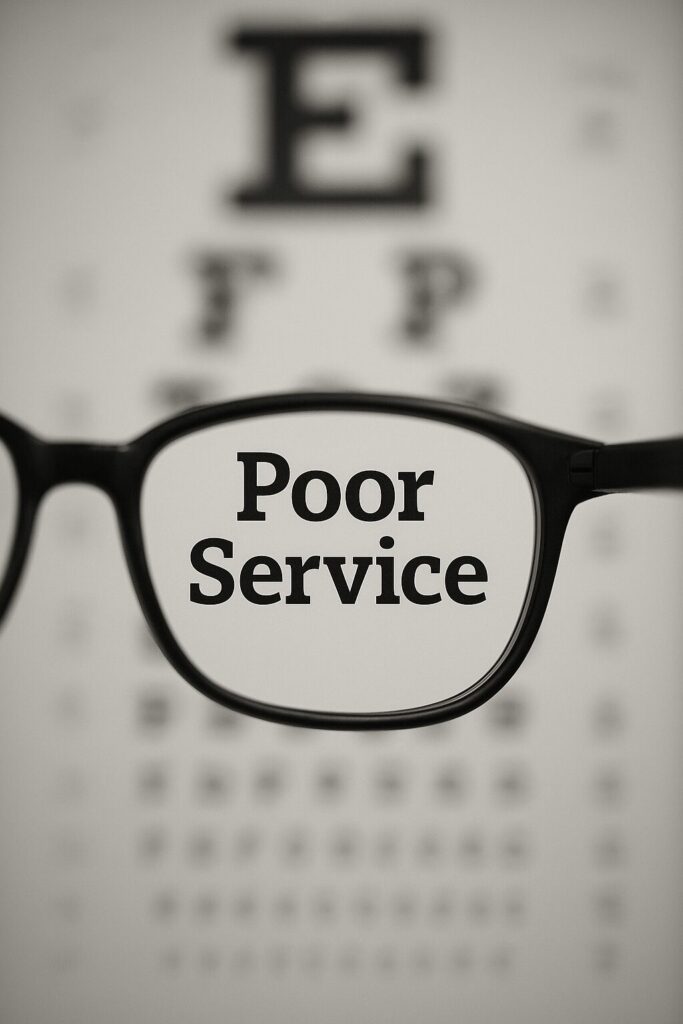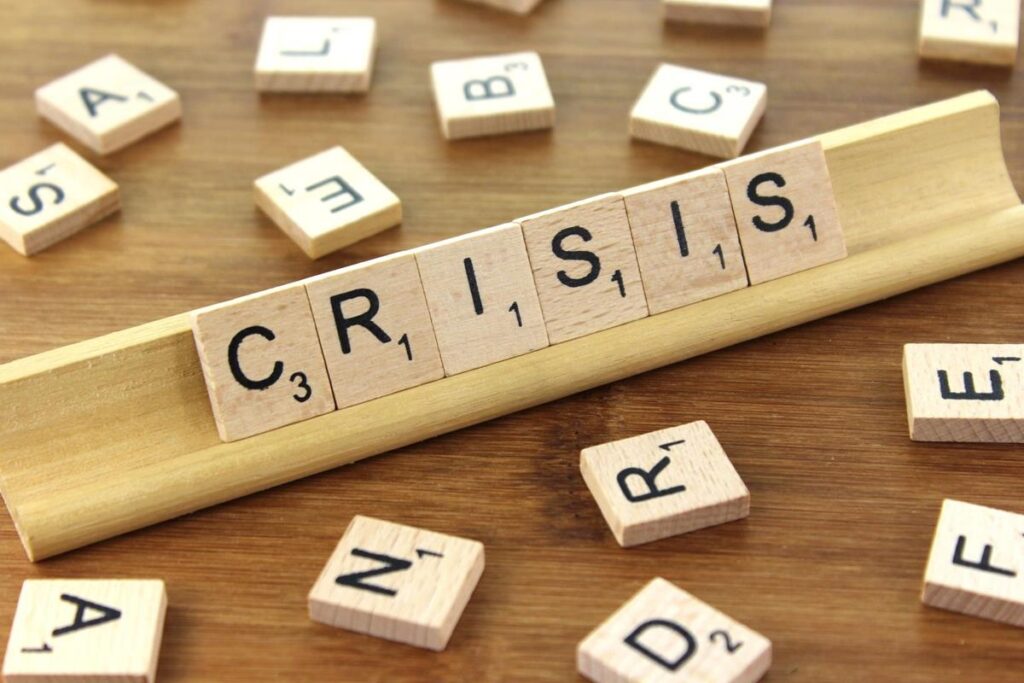The Hidden Costs of Poor Customer Service

And How a Contact Center Can Save Your Business Poor customer service is more than an inconvenience—it’s a threat to your bottom line. Businesses that fail to meet rising customer expectations risk losing loyal clients, damaging their brand, and incurring unnecessary costs. Let’s break down the hidden costs of poor customer service and why partnering with a professional contact center can protect your brand and boost profitability. 1. Lost Revenue from Customer Churn Customers are more likely to leave due to bad service than price or product quality. Long wait times, unresolved issues, and unhelpful responses all contribute to customer churn, leading to immediate and long-term revenue loss. The article “The Value of Keeping the Right Customers” highlights how innovative firms use churn rate analysis proactively to prevent customer loss. It emphasizes that understanding and addressing the reasons behind customer churn is crucial for maintaining a healthy customer base and ensuring long-term profitability. An experienced contact center ensures fast, effective support that retains customers and increases their lifetime value. 2. Damaged Brand Reputation In the age of online reviews and viral tweets, one negative customer experience can reach thousands. Rebuilding brand reputation takes time, money, and effort—and not always successfully. Skilled agents de-escalate issues and create positive experiences, reducing the chance of public backlash and fostering brand loyalty. 3. Higher Customer Acquisition Costs (CAC) It’s more expensive to gain a new customer than keep an existing one. Poor service forces businesses to spend more on marketing and sales to replace lost customers. A contact center focuses on customer retention, helping lower CAC and increase return on investment from your marketing efforts. 4. Lower Employee Morale and Higher Turnover Dealing with upset customers drains employees and leads to burnout, creating a high-turnover environment that’s costly to maintain. Dedicated agents handle customer interactions, allowing your in-house team to focus on their core roles in a stress-free environment. 5. Missed Upselling and Cross-Selling Opportunities Frustrated customers are unlikely to explore additional purchases. Customer dissatisfaction blocks opportunities for revenue growth. Trained agents know when and how to recommend relevant products, turning support calls into sales opportunities. 6. Decreased Customer Lifetime Value (CLV) Dissatisfied customers spend less, refer less, and leave faster. Poor service shrinks your Customer Lifetime Value, limiting business growth. In the article “What Most Companies Miss About Customer Lifetime Value”, Michael Schrage discusses the importance of CLV as a metric that brings both quantitative rigor and a long-term perspective to customer acquisition and relationships. This insight underscores how poor customer service can significantly diminish CLV by reducing repeat business and referrals. Exceptional service improves repeat business, loyalty, and referrals—directly increasing CLV. 7. Increased Customer Effort = Decreased Loyalty If a customer has to work hard to resolve an issue, they’ll often turn to a competitor. Multiple transfers, long waits, and repeating information increase customer effort and reduce loyalty. Modern contact centers use efficient workflows and technology to create smooth, low-effort experiences that boost loyalty. Why Partnering with a Contact Center is a Smart Business Move Avoiding these hidden costs starts with a proactive customer service strategy. A reliable contact center offers: Don’t Let Poor Customer Service Cost You More Partnering with a professional contact center safeguards your brand, your customers, and your bottom line. Contact ACC Premiere today to discover how we can elevate your customer experience and keep your business thriving.
Empathy in Customer Service: The Key to Understanding

Contact centers are often the frontline of a company’s relationship with its customers. Whether it’s a billing issue, technical glitch, or general inquiry, customers reach out expecting more than just a quick fix—they crave a human connection. This is where empathy in customer service becomes a true differentiator. When agents lead with empathy, it doesn’t just solve problems—it transforms experiences. Here’s how empathy elevates contact center performance and delivers measurable business impact. 1. Empathy Builds Emotional Connections with Customers Empathy is the ability to understand and share someone else’s feelings. In the contact center world, this translates to acknowledging emotions and showing that the customer’s concerns are valid. When agents say things like, “I completely understand why this would be frustrating,” it fosters trust, rapport, and emotional connection—all essential elements of a positive customer journey. Understand how Phone Etiquette Changes with Personal and Cultural Experiences 2. Empathetic Communication Reduces Customer Frustration Many customer service calls start from a place of stress. If agents respond with robotic or impersonal replies, it can escalate tension. But an empathetic response helps de-escalate. By listening, expressing concern, and offering personalized solutions, agents can defuse frustration and turn a potentially negative call into a brand-building opportunity. 3. Empathy Drives Customer Retention Customers may forget the resolution, but they won’t forget how they were treated. A PwC study found that 59% of consumers will abandon a brand after several bad experiences, and 17% will leave after just one. Empathy builds emotional loyalty, making customers more forgiving of mistakes and more likely to stick with your brand over time. 4. Happier Agents, Better Service Empathy isn’t just for customers—it’s a game-changer for your team too. Agents who are encouraged to connect emotionally with callers often report higher job satisfaction and engagement. When customer service reps feel empowered and valued, they perform better and are less likely to burn out or churn. 📌 Need help improving your team’s morale? Check out our guide to Improving Agent Morale 5. Positive Brand Reputation Starts with Empathy Every customer interaction is a chance to shape your brand’s public image. In an era where a single tweet or review can go viral, empathy in customer service protects your reputation. Customers who feel heard and respected are more likely to leave positive reviews, refer others, and become brand advocates. 6. Empathy Improves Customer Loyalty Metrics Metrics like Net Promoter Score (NPS) and Customer Satisfaction (CSAT) are heavily influenced by the quality of emotional engagement during support interactions. A study from The Service Profit Chain found that emotionally engaged customers are 3x more likely to recommend a product. Simply put: empathy boosts your metrics—and your bottom line. 7. Personalized Solutions Through Empathetic Listening Empathy enables agents to tailor responses based on a customer’s specific situation. Rather than relying on scripts, empathetic agents ask better questions and deliver customized solutions. This level of personalization strengthens the bond between brand and customer, while ensuring needs are thoroughly met. 8. Empathy Enhances First Contact Resolution (FCR) First Contact Resolution is one of the most valuable contact center KPIs. When agents take the time to understand a customer’s emotions and situation fully, they’re more likely to resolve the issue during the first call. This reduces the need for follow-ups and dramatically improves customer experience and operational efficiency. Empathy is a Business Superpower Empathy isn’t just a soft skill—it’s a competitive advantage. From improving customer satisfaction and loyalty to increasing agent performance and strengthening brand reputation, empathy touches every facet of a successful contact center operation. In an industry built on connection, those who lead with empathy will lead the future.
Recall Response Strategy: The Critical Role of Contact Centers

Why U.S. Companies Need a Reliable Recall Response Strategy Product recalls in the United States happen more frequently than many realize, affecting industries ranging from food and beverages to electronics, automotive, and consumer goods. In 2023 alone, the U.S. Food and Drug Administration (FDA) and the Consumer Product Safety Commission (CPSC) recorded thousands of product recalls. The National Highway Traffic Safety Administration (NHTSA) reported nearly 1,000 automotive recalls affecting over 30 million vehicles. Having a recall response strategy in place should be part of your business toolkit. For businesses, these recalls pose significant risks—damaging customer trust, incurring legal penalties, and causing financial losses. A well-prepared contact center is a critical asset in managing recall-related customer inquiries and ensuring smooth communication during a crisis. The High Cost of Poor Recall Management When a recall is issued, consumers expect immediate answers: Without an efficient customer service response, companies risk damaging their reputation, losing customer loyalty, and facing potential lawsuits. A well-structured contact center ensures clear communication, fast response times, and regulatory compliance—mitigating risks and keeping customers informed. How a Contact Center Enhances Recall Response 1. Managing High Call Volumes Efficiently Recalls generate a surge in customer inquiries. Without a dedicated contact center, companies struggle to manage the increased demand, leading to long wait times and customer frustration. contact centers with trained agents ensure smooth operations and prevent bottlenecks. 2. Delivering Accurate, Consistent Information Misinformation spreads quickly during a recall. A centralized contact center provides accurate details on returns, replacements, refunds, and safety procedures—helping consumers make informed decisions. 3. Preserving Customer Trust and Brand Reputation A recall can damage a brand’s reputation, but a responsive, empathetic contact center reassures customers that the company is taking action. Well-trained agents help manage concerns, reinforcing brand credibility. 4. Collecting Valuable Customer Feedback Contact centers serve as a valuable tool for gathering insights from customers about the recall. Feedback helps companies identify the root cause of issues, improve future products, and demonstrate commitment to safety and quality. 5. Ensuring Regulatory Compliance Regulatory agencies, such as the FDA, CPSC, and NHTSA, often require companies to communicate recall information to consumers. Contact centers help businesses stay compliant by documenting customer interactions and ensuring all inquiries meet legal requirements. 6. Providing Multichannel Customer Support Modern contact centers handle more than just phone calls—they manage inquiries via email, live chat, and social media. This omnichannel approach ensures seamless customer communication across multiple platforms. What Happens If You’re Not Prepared? Without a structured recall response team, companies face: Be Proactive—Not Reactive Product recalls are inevitable, but how a company handles communication during a crisis determines its long-term success. A well-prepared contact center ensures transparency, efficiency, and customer satisfaction, helping businesses navigate recalls with confidence. Are you prepared for a product recall? Contact us today to strengthen your crisis response strategy. Download our FREE Crisis Toolkit now!
Employee Engagement Case Study: Lessons from the Pandemic

Introduction The COVID-19 pandemic was a defining moment for businesses worldwide. It separated organizations that seamlessly transitioned to remote work from those that struggled, desperately awaiting a return to office plans. While some companies thrived and others faltered, one constant remained: engaged employees continued to be a key driver of productivity and business growth. This case study explores the impact of employee engagement during the pandemic, leveraging insights from Gallup’s research and industry findings. We will analyze how engagement influenced organizational resilience and examine strategies to cultivate a high-performance culture in a post-pandemic world. The Measurable Impact of Employee Engagement Gallup’s extensive research has consistently demonstrated the direct correlation between employee engagement and critical business outcomes, including profitability, productivity, absenteeism, and customer loyalty. Their Q12 survey assesses employee engagement based on 12 fundamental needs related to individual growth, teamwork, and leadership support. Pre-Pandemic Employee Engagement Levels Before the pandemic, Gallup found that only 30% of employees were engaged, actively contributing to their company’s success. Meanwhile: These statistics illustrate a significant challenge: organizations with disengaged employees faced an uphill battle, especially when forced into a remote work model without a solid engagement strategy. The Remote Work Disengagement Paradox Despite the perceived benefits of remote work—eliminating commutes, reducing work-related expenses, and minimizing health risks—some employees became even more disengaged. Why? Because engagement isn’t about physical presence; it’s about emotional connection to an organization’s mission, purpose, and leadership. Engaged employees understand their role in the company’s broader vision, feel empowered to contribute, and believe in the mission. The pandemic underscored the importance of intentional engagement efforts, proving that without them, organizations risk losing productivity, morale, and ultimately, business performance. The Culture Continuum: A Framework for Engagement The consulting firm Senn-Delaney outlines six levels of organizational engagement, known as the “Culture Continuum.” Where a company falls on this scale often determines its ability to navigate crises successfully. Companies that had reached Levels 4 and 5 before 2020 were better positioned to thrive during the pandemic. These organizations prioritized employee experience, understanding that engaged employees directly influence customer satisfaction and business success. Case Study: Engagement as a Crisis-Proof Strategy Businesses that weathered the pandemic successfully shared a common trait: a deeply engaged workforce. Companies with a foundation of engagement were able to adapt quickly, implement necessary changes, and maintain productivity despite unprecedented challenges. For example, organizations that had already fostered a culture of trust and empowerment found it easier to transition to remote work, while those with lower engagement struggled with communication breakdowns and decreased morale. The lesson is clear: employee engagement is not just a “nice-to-have” but a strategic imperative for resilience and growth. Key Takeaways for Future Success To create a customer-centric culture through deeply engaged employees, leadership must prioritize engagement as a core business strategy. The most successful companies will: Conclusion The pandemic reinforced a critical lesson: organizations with highly engaged employees are more adaptable, resilient, and ultimately, more successful. Moving forward, businesses must view employee engagement not as an HR initiative, but as a strategic driver of revenue, profitability, and long-term growth. By cultivating a culture where employees feel valued, empowered, and connected to the mission, companies can ensure they remain competitive and future-ready in any economic climate.
Managing a Product Recall with a Proactive Strategy – Case Study

How to Handle Any Customer Service Crisis in 4 Steps When an unexpected crisis—such as a product recall or PR disaster—strikes, a company’s ability to respond swiftly and effectively can make all the difference. A well-executed crisis management strategy not only protects brand reputation but also strengthens customer trust. At ACC Premiere, we have helped numerous brands navigate high-stakes customer service crises, ensuring minimal disruption and maximum customer satisfaction. Through our experience, we have identified four key steps that are essential to successfully managing a product recall or any customer service emergency. Step 1: Plan Ahead Preparation is key. Managing a product recall begins long before an issue arises. A robust crisis plan should be tailored to your brand’s unique needs and include: By outlining clear procedures and assembling a response team, businesses can react instantly and confidently to unexpected situations, reducing response time and mitigating potential damage. Step 2: Rehearse & Test Your Plan A crisis plan is only as good as its execution. Rehearsing your plan through simulated crisis scenarios helps identify gaps, streamline processes, and ensure that all team members understand their roles. This proactive approach enhances readiness and ensures a smooth, coordinated response when a real crisis unfolds. Step 3: Communicate Clearly & Consistently Effective communication is critical during a product recall. Transparent messaging—both internally and externally—helps manage public perception and reduces confusion among customers. By keeping customers informed with clear, concise messaging, brands can prevent misinformation and maintain credibility throughout the recall process. Step 4: Deliver Resolution & Customer Satisfaction Once the recall process is underway, the focus should shift to customer care and resolution. A seamless recovery strategy reassures customers and reinforces brand loyalty. Customers should feel valued and prioritized—knowing that your company places their well-being above sales or profits. This approach fosters long-term customer trust and minimizes potential reputational damage. Conclusion: Turning Crisis into Opportunity A well-executed product recall can showcase a brand’s commitment to customer safety and service excellence. By following these four critical steps—planning, rehearsing, communicating, and resolving—you can navigate any crisis with confidence and integrity. At ACC Premiere, we specialize in helping businesses create proactive crisis management strategies that protect their reputation and retain customer loyalty. Contact us today to learn how we can support your organization in preparing for the unexpected.
How Exceptional Customer Service Created a Lasting Brand Connection – Case Study

Exceptional Customer Service A leading American beverage brand, renowned for its playful packaging and deep consumer engagement, recently turned a simple customer inquiry into an unforgettable brand experience. This case study highlights how exceptional customer service can transform a routine request into a moment of extraordinary brand connection. The Challenge A devoted customer reached out to the brand’s support team, searching for a specific beverage flavor that had become unexpectedly out of stock. She was determined to purchase several cases but couldn’t find them anywhere. The Customer Connection Instead of providing a standard response, the customer service representative took the conversation a step further. They asked a crucial question: Why did the customer need multiple cases of this particular flavor? The answer revealed a touching story. The customer was honoring her late grandfather, who had cherished this beverage flavor throughout his life. She wanted to serve it at his memorial service, where friends, family, and the community would gather to celebrate his memory. The Solution Recognizing the emotional significance of the request, the representative escalated the case to brand marketing. The team saw an opportunity to create a deeply personal and memorable brand experience. The company: The Impact This extraordinary act of customer care left a profound impression on the grieving family. By going beyond a standard customer service interaction, the brand: The ACC Premiere Advantage At ACC Premiere, we specialize in turning customer service interactions into powerful brand-building moments. We partner with companies that view service as a key differentiator, delivering exceptional support that fosters customer loyalty and long-term engagement. Ready to transform your customer service strategy? Contact ACC Premiere today to learn how we can elevate your brand experience.
Why Contact Centers Are Essential for Product Recalls: Ensuring Customer Trust & Compliance

The Growing Need for Contact Centers in Product Recalls In the United States, product recalls are more common than many people realize. Every year, hundreds of companies across various industries are forced to issue recalls, often due to safety concerns, defective products, or regulatory violations. In 2023 alone, the U.S. Food and Drug Administration (FDA) and the Consumer Product Safety Commission (CPSC) recorded thousands of product recalls, ranging from food and beverage items to electronics, automotive parts, and household goods. These recalls span companies of all sizes, from multinational corporations to small businesses, and the consequences can be severe, both in terms of customer trust and financial impact. The Numbers Behind Recalls in the U.S. The sheer number of recalls is staggering. According to CPSC data, approximately 400 product recalls are announced annually, and the FDA sees thousands of food recalls each year. The automotive industry, overseen by the National Highway Traffic Safety Administration (NHTSA), experiences its own share of recalls, with millions of cars recalled each year due to safety defects. In 2022, nearly 1,000 automotive recalls were reported, affecting over 30 million vehicles. These statistics reflect a growing concern for consumer safety and increased regulatory scrutiny. Companies must react quickly to minimize the impact of a recall and manage the resulting customer inquiries, complaints, and concerns. Handling High Call Volumes One of the immediate challenges companies face when issuing a recall is handling the sudden surge in customer inquiries. Consumers want to know if their product is affected, how they can return or replace it, what steps they need to take to ensure their safety, and whether the company will offer compensation. Failing to address these concerns swiftly can result in not only customer dissatisfaction but also potential legal ramifications. This is where having a well-prepared contact center becomes invaluable. Here’s why: How to Set Up a Recall-Ready Contact Center When a recall is announced, a significant influx of customer calls, emails, and messages is inevitable. A dedicated call center ensures that the company can handle the spike in demand without overwhelming its regular customer service channels. With trained agents ready to address recall-related issues, companies can maintain business continuity and avoid bottlenecks. Delivering Accurate Information to Customers During a recall, misinformation can spread quickly. Contact centers provide a controlled environment where customers receive consistent, accurate information about the recall process. Trained agents can give clear instructions on returning products, filing claims, or receiving refunds, minimizing confusion and reducing the risk of further incidents. Building & Maintaining Customer Trust Product recalls can damage a brand’s reputation if handled poorly. A responsive, empathetic contact center can help retain customer loyalty during a crisis. Contact center agents serve as the company’s frontline representatives, helping reassure customers that the situation is under control and that their concerns are a priority. Collecting Valuable Feedback Contact centers are an essential tool for gathering feedback during a recall. By listening to customer complaints, questions, and suggestions, companies can gain insight into the root cause of the issue and develop better products or services in the future. This feedback loop not only helps companies improve but also demonstrates their commitment to customer safety and satisfaction. Compliance with Regulatory Requirements Depending on the industry, companies may be required to provide detailed reporting and communication to customers during a recall. A contact center needs to be prepared that these requirements are met, documenting customer interactions and ensuring that all inquiries are handled according to regulatory standards. Supporting a Multichannel Approach Many modern contact centers need to be equipped to handle not just phone calls but also emails, live chat, and social media inquiries. This multichannel approach is essential during a recall, as consumers may reach out through various platforms. A fully equipped contact center ensures that the company can respond to customers wherever they choose to engage, ensuring a smooth and cohesive experience. The Risks of Not Having a Recall Response Strategy Without a contact center ready to handle the influx of customer interactions during a recall, companies risk creating confusion and dissatisfaction. A slow or inadequate response can lead to frustrated customers, negative media coverage, and, in the worst-case scenario, legal challenges from regulators or class-action lawsuits. Customers today expect transparency and timely communication, and failing to meet these expectations can result in long-term damage to a brand’s reputation. Additionally, the absence of a contact center puts an immense burden on internal teams who may not have the resources to handle the surge in demand. This leads to inefficiencies, longer response times, and potential errors in communication—all of which can further exacerbate the crisis. Product recalls are an inevitable part of doing business in many industries, but they don’t have to spell disaster. Companies that proactively prepare for potential recalls by setting up a robust, responsive contact center can mitigate much of the fallout. From handling high call volumes to ensuring regulatory compliance and maintaining customer trust, a contact center is a critical asset for any business facing a recall situation. In the end, how a company manages the communication process during a recall can make the difference between losing customers and retaining them for the long term. Are you prepared? Contact Us today and learn more about how you can be ready! Need expert support for product recalls? Contact our innovation specialists today and download our FREE Crisis Toolkit
Does Phone Etiquette Change with Personal or Cultural Experience?

Phone etiquette is far from one-size-fits-all. While professional phone communication follows general best practices, personal and cultural experiences significantly influence how people interact over the phone. A contact center agent’s ability to recognize and adapt to these differences can make or break customer satisfaction. Understanding how factors like formality, communication style, and cultural norms impact phone interactions is key to delivering exceptional customer service. In this article, we’ll explore how personal background and cultural influences shape phone etiquette—and how contact centers can train agents to navigate these nuances for better customer connections. Does Phone Etiquette Change with Personal or Cultural Experience? Effective communication is the backbone of excellent customer service. While phone etiquette is often seen as a universal standard, the reality is that personal and cultural experiences significantly influence how people perceive and practice phone etiquette. Understanding these nuances can help contact center agents foster better connections with customers, ultimately improving satisfaction and loyalty. The Role of Personal Experience Personal background plays a major role in shaping an individual’s approach to phone interactions. Factors such as past work experiences, education, and even personality traits influence how someone communicates over the phone. For example: Formality vs. Informality: Some individuals may naturally use a formal tone, addressing customers with “sir” or “ma’am,” while others prefer a more casual, friendly approach. Direct vs. Indirect Communication: People with backgrounds in industries that prioritize efficiency may get straight to the point, whereas those from service-oriented fields may focus more on relationship-building and small talk. Experience with Technology: Someone accustomed to digital communication may struggle with traditional phone etiquette, such as waiting for a response before speaking or avoiding multitasking while on a call. Cultural Influences on Phone Etiquette Cultural norms also heavily impact phone communication styles. What is considered polite in one culture may come across as abrupt or overly formal in another. Here are a few key cultural differences that can affect phone etiquette: Use of Formal Titles: In many Asian and European cultures, addressing someone by their last name with a title (e.g., Mr. Smith, Ms. Rodriguez) is a sign of respect. In contrast, some Western cultures, like in the U.S., often favor first-name interactions for a friendlier experience. Pace and Silence: Some cultures, such as Japanese and Nordic countries, value pauses in conversation as a sign of thoughtfulness, whereas in Latin American or Middle Eastern cultures, continuous dialogue may be preferred to maintain engagement. Tone and Volume: In cultures where animated speech is common, a raised voice may indicate enthusiasm rather than frustration. However, in more reserved cultures, speaking loudly might be perceived as aggressive or rude.Indirect vs. Direct Communication: Some cultures, like those in Germany or the Netherlands, appreciate directness and brevity. Others, such as in many Asian and Middle Eastern cultures, may rely on indirect language to avoid confrontation and show respect. Adapting to Diverse Communication Styles in Contact Centers For contact center professionals, adapting to different personal and cultural communication styles is essential for delivering high-quality service. Here’s how agents can navigate these differences effectively: Active Listening – Pay attention to the customer’s tone, pace, and language style to mirror their communication approach appropriately. Flexibility in Communication – Adjust formality levels based on cues from the customer. If they prefer a formal interaction, maintain professionalism; if they seem more relaxed, reciprocate appropriately.Cultural Awareness Training – Regular training sessions on cultural sensitivity can equip agents with knowledge about different communication preferences worldwide. Empathy and Adaptability – Understanding that no single approach works for everyone helps agents personalize interactions and build rapport. Resolving Customer Complaints Effectively in a Contact Center in paramount to success. Clarification and Confirmation – If unsure about a customer’s communication preference, ask simple questions to ensure clarity without making assumptions. While professional phone etiquette provides a solid foundation for customer service interactions, personal and cultural experiences play a major role in shaping communication preferences. contact centers that acknowledge and adapt to these differences can offer more personalized and effective customer interactions, leading to stronger relationships and improved customer satisfaction. By focusing on active listening, communication flexibility, and cultural awareness training, contact center agents can bridge communication gaps and ensure that every customer feels heard and respected. In an increasingly diverse marketplace, embracing these differences is not just beneficial—it’s essential. How do you adjust your phone communication style for different customers? Share your thoughts in the comments!
Beyond Industry Standards: Rethinking Customer Experience in a Borderless Market

Why Customer Experience (CX) No Longer Competes Within Industries Customer expectations have evolved. Today, businesses are no longer compared solely to their direct competitors but to the last great experience a customer had—anywhere. This phenomenon, known as expectation transfer, means that customer experience (CX) is now measured against industry leaders like Amazon, Uber, Netflix, and Apple—not just local competitors. If a banking app isn’t as intuitive as a food delivery app, customers notice. If a retail store’s support isn’t as seamless as an AI chatbot, it creates frustration. To stay competitive, businesses must rethink CX beyond their industry standards and embrace personalization, effortless service, and emotional connection. What Makes an Exceptional Customer Experience? Businesses that dominate customer experience share common principles, regardless of industry: 1. Effortless Interactions A seamless, frictionless experience keeps customers engaged. Leaders in CX eliminate unnecessary steps, offering:✅ AI-powered chatbots for instant support✅ Self-service options for quick problem resolution✅ Omnichannel support to move effortlessly between chat, phone, and email 2. Personalization at Scale Customers expect hyper-personalization—from product recommendations to service interactions. Companies use:✅ AI & machine learning to tailor experiences✅ Predictive analytics to anticipate needs✅ CRM integration for a unified customer journey 3. Emotional Connection & Trust Technology should enhance, not replace, human connection. High-performing brands prioritize:✅ Authentic interactions in customer service✅ Empathy-driven responses that feel personal✅ Proactive engagement to build lasting trust How Businesses Can Compete in the New CX Landscape To meet modern expectations, companies should learn from CX leaders across industries and implement: 💡 AI & automation – Reduce response times and enhance personalization💡 Omnichannel strategies – Provide seamless transitions between online and offline interactions💡 Experience-driven metrics – Measure customer feelings, not just efficiency. Understand Metrics That Matter. The brands that succeed will be those that prioritize effortless, personalized, and emotionally engaging experiences—ensuring customers remain loyal in a world where expectations are always rising.
The New Employee: Hybrid Workers and the Future of Work

The traditional 9-to-5 office job is no longer the gold standard for work. As businesses evolve and technology advances, the hybrid workforce has emerged as the new normal. Hybrid workers, those who split their time between remote and in-office work, represent a fundamental shift in how companies and employees define productivity, collaboration, and work-life balance. The Rise of Hybrid Work The COVID-19 pandemic forced businesses worldwide to rethink their operations, accelerating the adoption of remote work. However, as organizations reopened offices, many realized that a one-size-fits-all approach no longer suited their workforce. Employees sought flexibility, and businesses found that a blended model of in-office and remote work provided both structure and freedom. A hybrid workforce allows employees to take advantage of face-to-face collaboration when needed while still enjoying the autonomy and convenience of working from home. This model has proven beneficial for companies and employees alike, increasing job satisfaction and retention while maintaining—if not improving—productivity levels. Key Benefits of Hybrid Work Challenges of a Hybrid Workforce While hybrid work offers numerous advantages, it also comes with challenges that companies must address: How Companies Can Successfully Adapt To thrive in a hybrid work environment, organizations must create a framework that supports flexibility while ensuring operational efficiency. Key strategies include: The Future of Work is Hybrid The hybrid work model is here to stay. Companies that embrace flexibility, innovation, and employee well-being will be best positioned for long-term success. As we navigate this new era of work, businesses and employees alike must adapt, communicate, and continuously refine their approach to create a thriving, balanced workforce. Are you ready to embrace the future of work? The new employee isn’t just remote or in-office—they’re hybrid, and they’re shaping the workplace of tomorrow.
Why Attending Conferences is Essential for Business Growth

Competitive Business Strategies Essential for Business Growth In today’s fast-paced business landscape, staying competitive business strategies require continuous learning, networking, and innovation. One of the most effective ways to achieve this is by attending industry conferences. Whether you’re a small startup or a large corporation, conferences offer unparalleled opportunities to expand your knowledge, connect with industry leaders, and strengthen your brand. Key Benefits of Attending Business Conferences 1. Unmatched Networking Opportunities Conferences provide a unique chance to meet professionals, potential clients, and industry influencers face-to-face. Unlike virtual interactions, in-person connections foster deeper relationships, leading to new partnerships and business opportunities. Building a strong professional network is crucial for growth, and conferences offer the perfect environment to do so. 2. Learning and Professional Development Industry conferences feature expert-led keynotes, workshops, and panel discussions covering the latest trends and challenges. Attending these sessions keeps your business ahead of the competition by providing fresh insights and strategies. Employees can bring back valuable knowledge to share with their teams, enhancing overall professional development. 3. Enhanced Brand Visibility Attending conferences, especially as an exhibitor or sponsor, positions your business as a key player in the industry. It’s a great way to showcase your products or services, engage directly with your target audience, and build brand recognition. Even as an attendee, being present at key industry events increases your visibility and credibility. 4. Competitive Insights Conferences provide a rare opportunity to observe your competitors firsthand. By analyzing their strategies, marketing approaches, and product innovations, you can refine your own business tactics. Staying informed about industry trends and competitors’ actions ensures your business remains competitive. 5. Inspiration and Innovation Hearing from thought leaders and industry pioneers can spark new ideas and strategies for your business. The dynamic energy of conferences fosters creativity, leading to fresh perspectives on product development, marketing strategies, and operational improvements. SOCAP is a great resource for top-tier customer care professionals. 6. Speaking Opportunities to Establish Authority If you have expertise in your industry, securing a speaking slot at a conference can elevate your brand’s reputation. Public speaking engagements position you as a thought leader, enhancing credibility and attracting new clients, partnerships, and media attention. 7. Staying Updated on Industry Trends Industry conferences are a hub for the latest research, technology advancements, and emerging trends. Attending ensures you stay informed about developments shaping your market, allowing you to adapt and strategize effectively to remain ahead of the curve. 8. Boosting Team Morale and Collaboration Bringing your team to a conference can serve as a powerful bonding and motivational experience. Exposure to new ideas, networking opportunities, and an engaging atmosphere can reignite enthusiasm and creativity, leading to increased productivity when employees return to work. Make Conferences Part of Your Business Strategy Attending conferences is an investment in your business’s future. From networking and learning to gaining a competitive edge and fostering innovation, the benefits are extensive. By making industry conferences a regular part of your growth strategy, you position your company for long-term success in an ever-evolving marketplace. Ready to Take Your Business to the Next Level? Contact Us Start exploring upcoming conferences in your industry today and leverage these powerful opportunities to drive growth, build connections, and stay ahead of the competition!
End-of-Year Contact Center Review: 5 Key Steps to Improve Performance in 2025

2024 has come to a close. Now, it’s essential for contact centers to conduct a performance review to assess successes, identify areas for improvement, and set strategic goals for the next year with 5 Key Steps to Improve Performance in 2025. A thorough evaluation ensures you’re meeting client expectations, keeping employees engaged, and delivering exceptional customer experiences. Here’s a five-step process to review your contact center’s performance and set the stage for a successful year ahead. 1. Analyze Key Contact Center Performance Metrics Start by evaluating core KPIs to measure efficiency and customer satisfaction: Customer Satisfaction Score (CSAT): Are customers happy with their interactions?Net Promoter Score (NPS): How likely are customers to recommend your services?First Call Resolution (FCR): Are issues resolved efficiently on the first contact?Average Handle Time (AHT): Is your team balancing speed and service quality? 📊 Pro Tip: Compare this year’s data to previous years to identify trends and areas for improvement. Use these insights to refine your strategy for next year. Need more insights on metrics: Read Top Call Center Metrics to Track for Success 2. Evaluate Customer Feedback Beyond KPIs, dive into customer insights from multiple sources: Surveys & Reviews: What are the most common complaints and compliments?Social Media Mentions: Are there recurring issues or trends?Support Tickets: What pain points keep resurfacing? Why It Matters: Understanding the “why” behind the numbers helps you make meaningful improvements in customer experience. 🔍 Action Tip: Use sentiment analysis tools to detect patterns in customer feedback and prioritize service enhancements accordingly. Learn from customer feedback. Click here to read more. 3. Assess Employee Performance & Engagement Your contact center agents are the backbone of your operations. Evaluate both individual and team performance using metrics like: Quality Assurance Scores – Are agents meeting service expectations?Schedule Adherence & Attendance – Is your workforce consistently available?Employee Feedback & Morale – Are team members engaged and motivated? 🚀 Boost Engagement: Conduct anonymous surveys to uncover employee pain points and enhance workplace culture. Happy employees lead to higher customer satisfaction! 4. Analyze Financial Performance Understanding your contact center’s financial health is crucial for long-term success. Review: Cost per Contact: Are operations running efficiently?Upselling & Cross-Selling Revenue: Is your team maximizing value?Client Retention Rate: Are you building long-term relationships? 💡 Pro Tip: Identify cost-saving opportunities, such as AI automation or workforce optimization, to improve profitability without sacrificing service quality. 5. Set Data-Driven Goals for Next Year Based on your findings, set SMART (Specific, Measurable, Achievable, Relevant, Time-bound) goals for next year. Focus on: 🎯 Customer Experience Enhancements: Improve CSAT and FCR through better training and AI-powered solutions.👥 Employee Retention: Invest in engagement strategies to reduce turnover.📈 Service Expansion: Explore new technologies, channels, or customer service offerings. 📝 Next Steps: Assign accountability for each goal and set quarterly check-ins to track progress. Final Thoughts Evaluating your contact center’s year in business isn’t just about identifying shortcomings—it’s about celebrating wins, learning from challenges, and positioning your company for success in 2025. How is your contact center reviewing the year? Share your approach in the comments below! 🔹 Need expert guidance? Contact us today to optimize your contact center’s performance for the future!